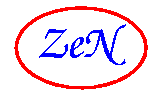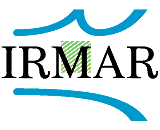| Links |


|
|
| [LLV06] |
H. Cohen and G. Frey, editors. Handbook of
Elliptic and Hyperelliptic Curve Cryptography.
Chapter 17, Point Counting on Elliptic and Hyperelliptic
Curves, R. Lercier, D. Lubicz and F. Vercauteren, pages 407-449.
Discrete Mathematics and its Applications. Chapman & Hall/CRC, 2006.
K.H. Rosen, series editor.
The discrete logarithm problem based on elliptic and
hyperelliptic curves has gained a lot of popularity as a
cryptographic primitive. The main reason is that no
subexponential algorithm for computing discrete logarithms
on small genus curves is currently available, except in very
special cases. Therefore curve-based cryptosystems require
much smaller key sizes than RSA to attain the same security
level. This makes them particularly attractive for
implementations on memory-restricted devices like smart
cards and in high-security applications.
The Handbook of
Elliptic and Hyperelliptic Curve Cryptography introduces the
theory and algorithms involved in curve-based
cryptography. After a very detailed exposition of the
mathematical background, it provides ready-to-implement
algorithms for the group operations and computation of
pairings. It explores methods for point counting and
constructing curves with the complex multiplication method
and provides the algorithms in an explicit manner. It also
surveys generic methods to compute discrete logarithms and
details index calculus methods for hyperelliptic curves. For
some special curves the discrete logarithm problem can be
transferred to an easier one; the consequences are explained
and suggestions for good choices are given. The authors
present applications to protocols for
discrete-logarithm-based systems (including bilinear
structures) and explain the use of elliptic and
hyperelliptic curves in factorization and primality
proving. Two chapters explore their design and efficient
implementations in smart cards. Practical and theoretical
aspects of side-channel attacks and countermeasures and a
chapter devoted to (pseudo-)random number generation round
off the exposition.
[ bib |
publication ]
Back |
|
|